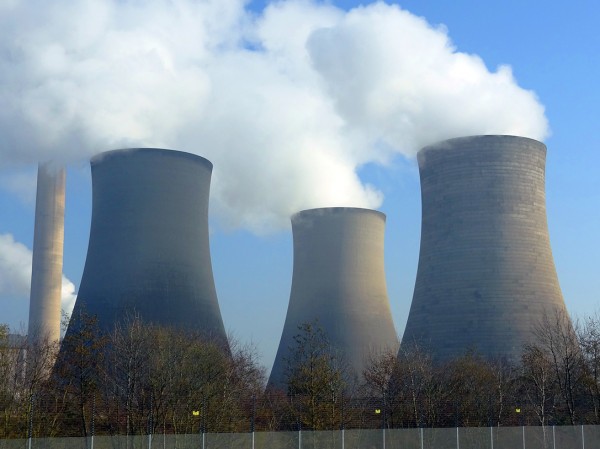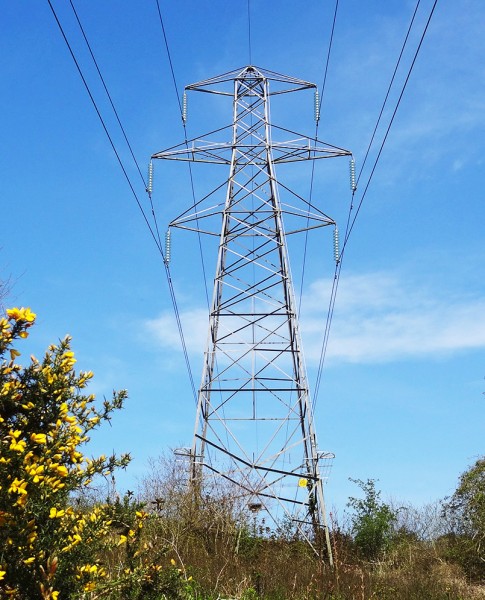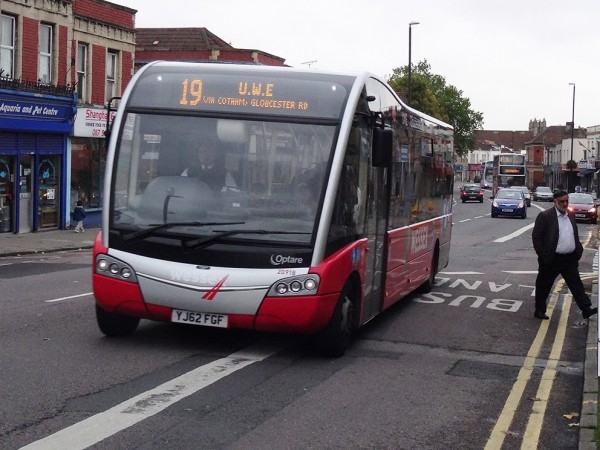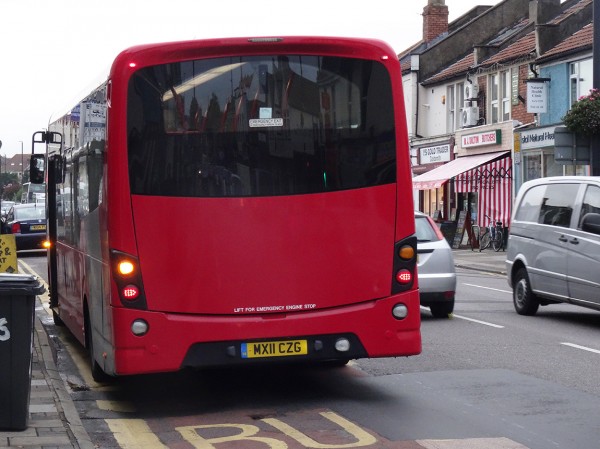 The Office for National Statistics (ONS) reported that the quantity of retail sales in the UK was 3.9% higher in August than it had been in July. However strong price competition meant that the value of these sales increased by only 0.4%. What were the key factors driving the big increase in the quantity of sales? Was it simply the response of consumers to falling prices?
The Office for National Statistics (ONS) reported that the quantity of retail sales in the UK was 3.9% higher in August than it had been in July. However strong price competition meant that the value of these sales increased by only 0.4%. What were the key factors driving the big increase in the quantity of sales? Was it simply the response of consumers to falling prices?
The data indicated that there was strong demand for goods associated with the housing market such as carpets, fridges and cookers. Spending on furniture increased very rapidly with sales rising by 24% over a 12 month period. Flat packed furniture proved to be particularly popular with consumers.
There was also strong demand for electrical goods and more specifically vacuum cleaners. The ONS estimated that a boom in the sale of vacuum cleaners in August was responsible for 25% of the increase in retail sales.
Why did the sales of vacuum cleaners increase so rapidly in August? Did UK households suddenly decide to keep their houses cleaner? The sales data shows that certain types of vacuum cleaners sold in much larger numbers than others.
For example, Tesco reported a 44% increase in the sales of 2,000 watt vacuum cleaners in the last two weeks in August while the Co-op reported an increase of 38%. Referring to the last weekend in August, the head of small domestic appliances at the on-line retailer ao.com stated that
We saw a huge surge in sales of corded vacuums over 1,600 watts over the weekend, with sales quadrupling.
There were also reports that a significant number of customers were buying more than one vacuum cleaner with these larger motors.
The key reason for the sudden surge in demand was the implementation of new regulations by the European Union as part of its energy efficiency directive. The ultimate objective of this directive is to reduce climate change. The specific policy that appears to have had such a big impact on consumers in the UK was the ban imposed on firms in the EU from making or importing vacuum cleaners that have motors above 1600 watts. This ban came into effect on the 1st September 2014.
A spokesperson for the consumer group Which? stated in August that
If you’re in the market for a powerful vacuum, you should act quickly, before all the models currently sell out. A Best Buy 2,200-watt vacuum costs around £27 a year to run in electricity – only around £8 more than the best scoring 1,600-watt we’ve tested.
The EU plans to reduce the maximum permitted wattage in vacuum cleaners to 900 watts in 2017. Restrictions have already been imposed on bigger electrical appliances such as televisions, washing machines and refrigerators. The EUs Ecodesign directive may also be extended to a range of smaller electrical appliances such as toasters and hair dressers in the future. It’ll be interesting to see if consumers respond in the same way to regulations imposed by the EU in the future.
Ten days left to vacuum up a powerful cleaner BBC (21/08/14)
Housing boom, food discounting and vacuum ban boost UK spending The Guardian, Larry Elliott, Phillip Inman, Lisa Bachelor (18/9/14)
UK retail sales boosted by vacuum cleaner sales BBC (18/9/14)
Retailers sell out of vacuum cleaners ahead of EU ban The Telegraph, Elliot Pinkham (30/8/14)
Power surge! Fourfold rise in sales of super vacuums: Some customers buying two or more models to beat new EU regulations Daily Mail, Andrew Levy (1/9/14)
Energy Efficiency Directive European Commission (accessed on 24/9/14)
Vacuum cleaner splurge pushes up UK retail sales The Guardian, Phillip Inman (18/9/14)
Questions
- Using a demand and supply diagram, illustrate what has happened in the market for high wattage vacuum cleaners in August. Pay particular attention in your answer to the role of expectations.
- What did your previous diagram predict would happen to the price of high wattage vacuum cleaners in August? Did this in fact happen?
- A fully informed rational consumer may purchase a higher wattage vacuum cleaner if they consider that the improvement in cleaning performance is greater than the extra cost of purchasing and using the cleaner. Can you provide an economic rationale for banning the sale of these machines in these circumstances?
- Using a demand and supply diagram illustrate the impact of banning the sale of a product in a competitive market.
 The energy market is complex and is a prime example of an oligopoly: a few dominant firms in the market and interdependence between the suppliers. Over 95% of the market is supplied by the so-called ‘big six’ and collectively they generate 80% of the country’s electricity. There are two further large generators (Drax Power Limited and GDF Suez Energy UK), meaning the electricity generation is also an oligopoly.
The energy market is complex and is a prime example of an oligopoly: a few dominant firms in the market and interdependence between the suppliers. Over 95% of the market is supplied by the so-called ‘big six’ and collectively they generate 80% of the country’s electricity. There are two further large generators (Drax Power Limited and GDF Suez Energy UK), meaning the electricity generation is also an oligopoly.
This sector has seen media attention for some years, with criticisms about the high profits made by suppliers, the high prices they charge and the lack of competition. Numerous investigations have taken place by Ofgem, the energy market regulator, and the latest development builds on a simple concept that has been a known problem for decades: barriers to entry. It is very difficult for new firms to enter this market, in particular because of the vertically integrated nature of the big six. Not only are they the suppliers of the energy, but they are also the energy generators. It is therefore very difficult for new suppliers to enter the market and access the energy that is generated.
 Ofgem’s new plans will aim to reduce the barriers to entry in the market and thus make it easier for new firms to enter and act as effective competitors. The big six energy generators are vertically integrated companies and thus effectively sell their energy to themselves, whereas other suppliers have to purchase their energy before they can sell it. The regulator’s plans aim to improve transparency by ensuring that wholesale power prices are published two years in advance, thus making it easier for smaller companies to buy energy and then re-sell it. Andrew Wright, the Chief Executive of Ofgem, said:
Ofgem’s new plans will aim to reduce the barriers to entry in the market and thus make it easier for new firms to enter and act as effective competitors. The big six energy generators are vertically integrated companies and thus effectively sell their energy to themselves, whereas other suppliers have to purchase their energy before they can sell it. The regulator’s plans aim to improve transparency by ensuring that wholesale power prices are published two years in advance, thus making it easier for smaller companies to buy energy and then re-sell it. Andrew Wright, the Chief Executive of Ofgem, said:
These reforms give independent suppliers, generators and new entrants to the market, both the visibility of prices, and [the] opportunities to trade, [that] they need to compete with the largest energy suppliers…Almost two million customers are with independent suppliers, and we expect these reforms to help these suppliers and any new entrants to grow.
Although such reforms will reduce the barriers to entry in the market and thus should aim to increase competition and hence benefit consumers, many argue that the reforms don’t go far enough and will have only minor effects on the competitiveness in the market. There are still calls for further reforms in the market and a more in-depth investigation to ensure that consumers are really getting the best deal. The following articles consider this ongoing saga and this highly complex market.
Ofgem ramps up scrutiny of Big six accounts Telegraph, Denise Roland (27/2/14)
 Energy firms told to trade fairly with smaller rivals BBC News (26/2/14)
Energy firms told to trade fairly with smaller rivals BBC News (26/2/14)
Energy regulator Ofgem force trading rules on ‘big six’ suppliers Financial Times, Andy Sharman (26/2/14)
Ed Davey calls on Ofgem to investigate energy firms’ gas profits The Guardian, Sean Farrell and Jennifer Rankin (10/2/14)
UK forces big power companies to reveal wholesale prices Reuters (26/2/14)
Watchdog unveils new rules on Big six energy prices Independent, Tom Bawden (26/2/14)
Energy Bills: New rules to boost competition Sky News, (26/2/14)
Questions
- What are the characteristics of an oligopoly?
- Explain the reason why the vertically integrated nature of the big six energy companies creates a barrier to the entry of new firms.
- What are the barriers to entry in (a) the electricity supply market and (b) the electricity generating market?
- What action has Ofgem suggested to increase competition in the market? How effective are the proposals likely to be/
- Why is there a concern about liquidity in the market?
- If barriers to entry are reduced, how will this affect competition in the market? How will consumers be affected?
- Why are there suggestions that Ofgem’s proposals don’t go far enough?
 In market capitalism, the stock of manufactured capital provides a flow of output. The profitability of the use of that capital depends on the cost of investing in that capital and the cost of using it, and on the flow of revenues from that capital. Discounted cash flow techniques can be used to assess the profitability of a given investment in capital; the flows of costs and revenues are discounted at a market discount rate to give a net present value (NPV). If the NPV is positive (discounted revenues exceed discounted costs), the investment is profitable; if it is negative, the investment is unprofitable. (See Economics, 8th edition, section 9.3.)
In market capitalism, the stock of manufactured capital provides a flow of output. The profitability of the use of that capital depends on the cost of investing in that capital and the cost of using it, and on the flow of revenues from that capital. Discounted cash flow techniques can be used to assess the profitability of a given investment in capital; the flows of costs and revenues are discounted at a market discount rate to give a net present value (NPV). If the NPV is positive (discounted revenues exceed discounted costs), the investment is profitable; if it is negative, the investment is unprofitable. (See Economics, 8th edition, section 9.3.)
There may be market imperfections in the allocation of investment, in terms of distorted prices and interest rates. These may be the result of market power, asymmetry of information, etc., but in many cases the market allows capital investment to be allocated relatively efficiently.
Natural capital
This is not the case with ‘natural capital’. Natural capital (see also) is the stock of natural resources and ecosystems that, like manufactured capital, yields a flow of goods and services into the future.  Natural capital, whilst it can be improved or degraded by human action, is available without investment. Thus the natural capital of the oceans yields fish, the natural capital of the skies yields rain and the natural capital of forests reduces atmospheric CO2.
Natural capital, whilst it can be improved or degraded by human action, is available without investment. Thus the natural capital of the oceans yields fish, the natural capital of the skies yields rain and the natural capital of forests reduces atmospheric CO2.
Even though some natural capital is owned (e.g. private land), much is a common resource. As such, it is free to use and tends to get overused. This is the Tragedy of the Commons – see, for example, the following news items: A modern tragedy of the commons and Is there something fishy going on?.
Natural capital accounting
But would it be possible to give a value to both the stock of natural capital and the goods and services provided by it? Would this environmental accounting enable governments to tax or subsidise firms and individuals for their use or enhancement of natural capital?
On 21 and 22 November 2013, the first World Forum on Natural Capital took place in Edinburgh. This brought together business leaders, politicians, economists, environmentalists and other scientists to discuss practical ways of taking natural capital into account in decision making. Central to the forum was a discussion of ways of valuing natural capital, or ‘natural capital accounting’. As the forum site states:
Natural capital accounting is a rapidly evolving new way of thinking about how we value the economic benefits we derive from our natural environment. The World Forum on Natural Capital will bring together world-class speakers, cutting edge case studies and senior decision makers from different sectors, in order to turn the debate into practical action.

But if natural capital is not owned, how is it to be priced? How will the costs and benefits of its use be valued? How will inter-generational effects be taken into account? Will firms price natural capital voluntarily if doing so reduces their profits? Will firms willingly extend corporate social responsibility to include corporate environmental responsibility? Will governments be prepared to introduce taxes and subsidies to internalise the costs of using natural capital, even if the effects extend beyond a country’s borders? Will natural capital accounting measure purely the effects on humans or will broader questions of maintaining and protecting environmental diversity for its own sake be taken into account? These are big questions and ones that various organisations are beginning to address.
Despite problems of measurement and incentives, sometimes there are clear economic benefits from careful evaluation and management of natural capital. Julia Marton-Lefèvre is Director General of the International Union for Conservation of Nature (IUCN). According to the first Guardian article below:
Her favourite example of natural capital working in practice comes from Vietnam, where “planting and protecting nearly 12,000 hectares of mangroves cost just more than $1m but saved annual expenditures on dyke maintenance of well over $7m. And that only accounts for coast maintenance: mangroves are also nurseries for fish, meaning livelihoods for fishing and source of nutrients … “
One organisation attempting to value natural capital is The Economics of Ecosystems and Biodiversity project (TEEB). It also looks at what organisational changes are likely to be necessary for the management of natural capital.
Based on data collected from 26 early adopter companies (60% of them with $10 Billion+ revenues each) across several industry sectors this provides real life evidence on the drivers and barriers for natural capital management.
 Pricing the environment is a highly controversial issue. Critics claim that the process can easily be manipulated to serve the short-term interests of business and governments. What is more, where tradable permits markets have been set up, such as the EU’s Emissions Trading Scheme (ETS), prices have often been a poor reflection of social costs and have been open to manipulation. As Nick Dearden, director of the World Development Movement (WDM), says:
Pricing the environment is a highly controversial issue. Critics claim that the process can easily be manipulated to serve the short-term interests of business and governments. What is more, where tradable permits markets have been set up, such as the EU’s Emissions Trading Scheme (ETS), prices have often been a poor reflection of social costs and have been open to manipulation. As Nick Dearden, director of the World Development Movement (WDM), says:
It is deeply ironic that the same financial markets that caused the economic crisis are now seen as the solution to our environmental crisis. It’s about time we learnt that financial markets need to be reined in, not expanded. Pricing these common resources on which people depend for their survival leaves all of us more exposed to the forces of the global economy, and decisions about whether or not to protect them become a matter of accounting.
The measurement of natural capital and setting up systems to internalise the costs and benefits of using natural capital is both complex and a political minefield – as the following articles show.
Articles
Putting a value on nature: Edinburgh conference says business is ‘part of the solution’ Blue & Green Tomorrow, Nicky Stubbs (20/11/13)
Edinburgh forum says putting value on nature could save it BBC News, Claire Marshall (20/11/13)
Natural capital must be the way forward, says IUCN director general The Guardian, Tim Smedley (11/11/13)
Is ‘natural capital’ the next generation of corporate social responsibility? The Guardian, Tim Smedley (7/11/13)
Natural capital accounting: what’s all the fuss about? The Guardian, Alan McGill (27/9/13)
Put nature at the heart of economic and social policymaking The Guardian, Aniol Esteban (1/3/13)
Campaigners warn of dangers of ‘privatised nature’ The Scotsman, Ilona Amos (21/11/13)
Edinburgh conference attempts to ‘privatise nature’ World Development Movement, Miriam Ross (18/11/13)
 Valuing Nature BBC Shared Planet, Monty Don (8/7/13)
Valuing Nature BBC Shared Planet, Monty Don (8/7/13)
Sites concerned with natural capital
World Forum on Natural Capital
TEEB for Business Coalition
International Union for Conservation of Nature
Questions
- How would you define natural capital?
- What are ecosystem services?
- Is social efficiency the best criterion for evaluating the use of the environment? What other criteria could you use?
- How would you set about deciding what rate of discount to use when evaluating the depletion of or enhancement of natural capital?
- How can game theory provide insights into the strategies of both businesses and governments towards the environment?
- What are the arguments for and against attempting to value natural capital and to incorporate these values in decision making?
 In many parts of the world, life in the oceans is dying out. The term ‘dead zones’ is used to describe seas that are devoid of marine life. And these zones are growing in size and number.
In many parts of the world, life in the oceans is dying out. The term ‘dead zones’ is used to describe seas that are devoid of marine life. And these zones are growing in size and number.
It’s not just the decline in fish and other marine species that’s worrying environmentalists and many others; it’s a growth in rubbish. Part of this is caused by natural disasters, such as the 2011 Tsunami in Japan that washed huge amounts of debris into the Pacific Ocean. But much of it is caused by rubbish carried down rivers and into the seas, or rubbish jettisoned from ships. The problem is particularly acute in areas of the oceans where currents circulate the rubbish into huge rubbish dumps. There are two such areas either side of Hawaii in the Pacific. Both are vast.
The first article below tells the tale of Newcastle (Australia) yachtsman Ivan Macfadyen. He completed the 2013 Melbourne to Osaka double handed yacht race earlier this year as skipper of his yacht Funnelweb and then went on to bring the yacht home to Australia via America and race the famous Trans-Pac Yacht Race from Los Angeles to Hawaii along the way.
Exactly 10 years before, when [he] had sailed exactly the same course from Melbourne to Osaka, all he’d had to do to catch a fish from the ocean between Brisbane and Japan was throw out a baited line.
“There was not one of the 28 days on that portion of the trip when we didn’t catch a good-sized fish to cook up and eat with some rice,” Macfadyen recalled. But this time, on that whole long leg of sea journey, the total catch was two. No fish. No birds. Hardly a sign of life at all.
After reaching Osaka in Japan, they sailed on to San Francisco via Hawaii.
“After we left Japan, it felt as if the ocean itself was dead,” Macfadyen said. “We hardly saw any living things. We saw one whale, sort of rolling helplessly on the surface with what looked like a big tumour on its head. It was pretty sickening.”
“I’ve done a lot of miles on the ocean in my life and I’m used to seeing turtles, dolphins, sharks and big flurries of feeding birds. But this time, for 3000 nautical miles there was nothing alive to be seen.”
In place of the missing life was garbage in astounding volumes.
As economists, you should readily understand that here we have a case of over-exploited common resources – a Tragedy of the Commons of epic proportions. One ship’s rubbish may make a tiny difference, but when the cost of dumping is near zero and when the oceans are not policed, what is rational for a single ship becomes a disaster when repeated tens of thousands of times by other ships
 Again, overfishing is the result of seemingly rational behaviour by crews of individual fishing boats. But as Economics (8th edition) points out on pages 328–30:
Again, overfishing is the result of seemingly rational behaviour by crews of individual fishing boats. But as Economics (8th edition) points out on pages 328–30:
Common resources are not owned but are available free of charge to anyone. Examples include the air we breathe and the oceans for fishing. Like public goods, they are non-excludable. For example, fishing boats can take as many fish as they are able from the open seas. There is no ‘owner’ of the fish to stop them. As long as there are plentiful stocks of fish, there is no problem.
But as more people fish the seas, so fish stocks are likely to run down. This is where common resources differ from public goods. There is rivalry. One person’s use of a common resource diminishes the amount available for others. This result is an overuse of common resources. This is why fish stocks in many parts of the world are severely depleted, why virgin forests are disappearing (cut down for timber or firewood), why many roads are so congested and why the atmosphere is becoming so polluted (being used as a common ‘dump’ for emissions). In each case, a resource that is freely available is overused. This has become known as the tragedy of the commons.
… When I use a common resource, I am reducing the amount available for others. I am imposing a cost on other people: an external cost. If I am motivated purely by self-interest, I will not take these external costs into account.
Try doing some research to find out just what has been happening to the state of the oceans in recent years.
Articles
The ocean is broken Newcastle Herald (Australia), Greg Ray (18/10/13)
Our Planet Is Exploding With Ocean Dead Zones Business Insider, Dina Spector (26/6/13)
Health of oceans ‘declining fast’ BBC News, Roger Harrabin (3/10/13)
Chaos in the Oceans Huffington Post, Evaggelos Vallianatos (14/10/13)
Ocean Health Suffers from Overfishing, Index Finds Live Science, TechMedia, Douglas Main (16/10/13)
Information
Dead zone (ecology) Wikipedia
Common Fisheries Policy Wikipedia
Reform of the Common Fisheries Policy Fisheries DG, European Commission
Ocean Health Index OHI
Questions
- How does a common resource differ from a public good?
- What is the equilibrium use of a common resource? Demonstrate this with a diagram.
- What is the socially efficient use of a common resource such as a fishing ground?
- In what ways have modern ‘industrial’ methods of fishing compounded the problem of the overuse of fishing grounds?
- What criteria, other than social efficiency, could be used to determine the optimal use of a common resource?
- Explain how the Common Fisheries Policy of the EU works. Are there any lessons that can be learned by other groups of countries from the experience of the CFP?
- Are there any ‘good news’ stories about the state of any of the oceans? If so, to what extent are they the result of deliberate human action?
- To what extent is the Internet a common resource?
 Demand and supply analysis can be applied to a multitude of markets. When there is a disequilibrium in a market, prices will tend to adjust to eliminate any shortage or surplus. But, what of road space? There is a demand and a supply of road space and when there are too many cars for the road space available, congestion is the consequence.
Demand and supply analysis can be applied to a multitude of markets. When there is a disequilibrium in a market, prices will tend to adjust to eliminate any shortage or surplus. But, what of road space? There is a demand and a supply of road space and when there are too many cars for the road space available, congestion is the consequence.
When an additional car enters the road network, there is a cost and a benefit to the driver. However, there are not only costs/benefits to the driver, but there are also costs/benefits to other road-users. When one car drives on the M25 it adds to the number of cars on the road. Once we reach the point where there are too many cars given the road space and thus the flow of cars per minute begins to fall, congestion starts to build up. There is a negative externality involved here – the actions of one person (the driver) impose an additional cost on other drivers (the congestion). It takes every other road user a little bit of extra time to get from A to B the more cars there are on the road.
Congestion is a problem in many parts of the country and various solutions have been suggested. Policies to reduce demand will help the congestion problem by reducing the number of cars on the road. Numerous strategies have been tried, such as restrictions on parking; improvements in public transport; an integrated transport policy; higher parking charges; work place parking levies; higher taxes on petrol, higher car taxes and congestion charging schemes.
 Alternatively, building more roads will directly increase the supply of road space, but this can (and has) simply led to more cars using the additional road space and thus the problem of congestion remains. Bus/taxi lanes are in use across the country and allow the users of public transport to benefit from faster journey times, thus encouraging them to forgo their cars and use buses. However, does this add to the congestion for other people?
Alternatively, building more roads will directly increase the supply of road space, but this can (and has) simply led to more cars using the additional road space and thus the problem of congestion remains. Bus/taxi lanes are in use across the country and allow the users of public transport to benefit from faster journey times, thus encouraging them to forgo their cars and use buses. However, does this add to the congestion for other people?
In Liverpool, a nine month trial is taking place, where bus lanes will be removed to find out if they have a positive effect on reducing congestion. By increasing the amount of road space available to all road users, Liverpool City Council will be able to see if directly increasing the supply of road space will help to meet the existing demand. The possibility, however, is that by increasing the supply of road space, more individuals will choose to use their cars, thus fuelling demand. Many argue that this trial is a step backwards and will add to congestion, reduce the appeal of travelling by bus and impose further costs on the environment. The following articles consider the debate surrounding congestion.
Liverpool City Council will scrap bus lanes for nine months BBC News (27/9/13)
Liverpool bus lanes plan criticised by government Liverpool Daily Post (9/10/13)
Calls for single 30% income tax rate BBC News (21/5/12)
Liverpool scraps bus lanes in trial BBC News (including video) (21/10/13)
Government warning over Liverpool council plans to axe bus lanes in the city Liverpool Echo (9/10/13)
Questions
- Explain why congestion is a negative externality. What other externalities exist with regard to car usage?
- Using a diagram, show the point at which congestion occurs and explain why there is a difference between the marginal private and marginal social cost.
- What will happen to the difference between the marginal private and social cost curves before and after congestion sets in?
- Think about the different solutions to the problem of congestion. In each case, explain whether it is a demand-side or supply-side solution and how it will aim to combat congestion. You should also consider whether it is a short or long term solution and how feasible it actually is.
- How will the abolition of bus lanes aim to reduce congestion?
- There are supporters for bus lanes and supporters for the abolition of them. Justify the arguments on each side of the debate. You should consider the wider implications as well as the impact on congestion.
 The Office for National Statistics (ONS) reported that the quantity of retail sales in the UK was 3.9% higher in August than it had been in July. However strong price competition meant that the value of these sales increased by only 0.4%. What were the key factors driving the big increase in the quantity of sales? Was it simply the response of consumers to falling prices?
The Office for National Statistics (ONS) reported that the quantity of retail sales in the UK was 3.9% higher in August than it had been in July. However strong price competition meant that the value of these sales increased by only 0.4%. What were the key factors driving the big increase in the quantity of sales? Was it simply the response of consumers to falling prices? 









